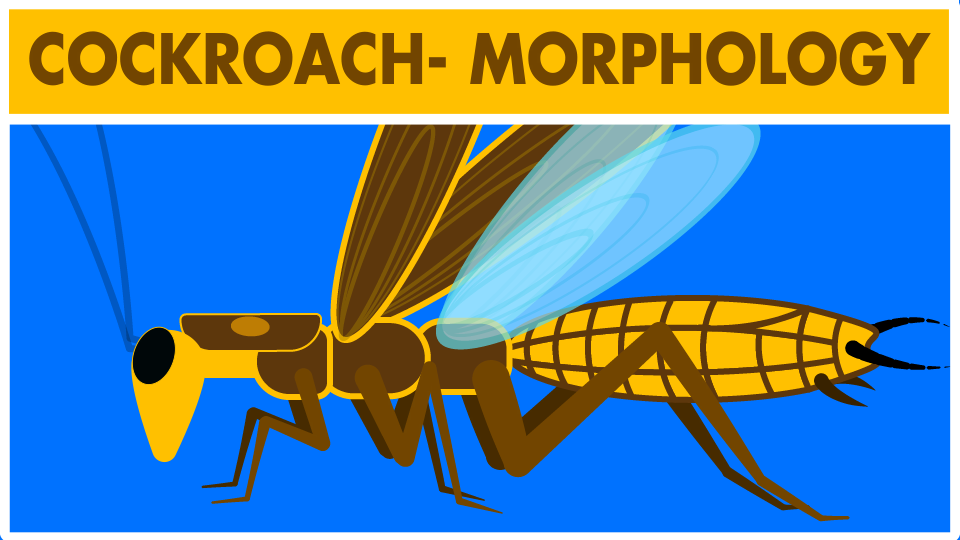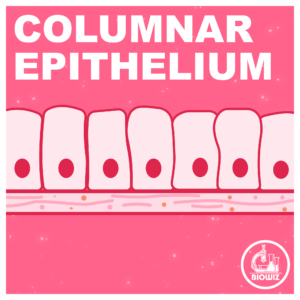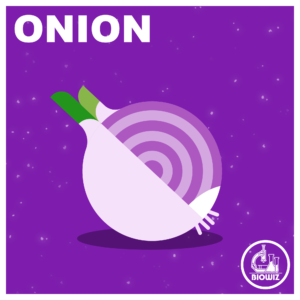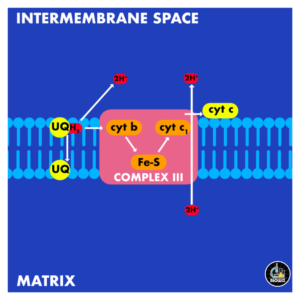CLASSIFICATION
- Kingdom- Animalia
- Phylum- Arthropoda
- Class- Insecta
- Order- Blattodea
- Family- Blattidae
- Genus- Periplanetta, Blatta
- Species- More than 4500 species of cockroaches
GENERAL POINTS
- Habitat- Warm, dark and damp places like kitchen, store houses, sewers.
- Body size- Length- 0.6cm – 7.6cm; Periplanetta americana– 3.4cm- 5.3cm.
- Body shape- Dorsoventrally flat.
- Body color- Usually Brown or black; some species have yellow, red, green body color.
- Body symmetry- Bilateral symmetry.
- Habit- Nocturnal i.e. feeds at night time.
- Exoskeleton- Made up of hard chitinous plates called Sclerites.
- Nutrition- Omnivores/ Scavengers/ some species of cockroaches show Cannibalism.
- Most common species of cockroaches are Periplanetta americana (American cockroach) and Blatta orientalis.
- Cockroaches are considered as serious pests and are vector for several diseases.
MORPHOLOGY
Body is divided into 3 distinct regions- Head, Thorax and Abdomen.
1. HEAD- Triangular in shape.
- Made up of 6 chitinous plates called Cephalic sclerites in Embryo.
- In adults, the cephalic sclerites are fused to form a single Head Capsule.
- I Cephalic sclerite Occiput- present at the top of head and is made up of 2 parts called Epi-cranial plates joined at Epi-cranial suture.
- II Cephalic sclerite Frons- present below the occiput on anterior part of the head.
- III Cephalic sclerite Clypeus- present just below the Frons on the anterior part.
- IV Cephalic sclerite Post-Occiput- present downward to the posterior part of Occiput.
- V Cephalic sclerite Gena- present on the lateral position.
- VI Cephalic sclerite Post-Gena- present inner to Gena.
- Head also has mouth parts and several sense organs on it.
1.1 MOUTH
- Mouth is downward facing called Hypognathous mouth.
- Mouth type is bitting and chewing type.
- Made up of several parts- Labrum, Mandibles, Maxilla, Hypopharynx, Labium.
- Labrum- also known as upper lip which hangs from Clypeus.
- Mandible- a pair of Mandibles are present inner to Labrum and consists of grinding and incising regions for cutting the food.
- Maxilla- a pair of Maxilla are present beneath the Mandible for mastication of food, helps in cleaning the antennae and also has Maxillary palp consisting of olfactory receptors.
- Labium- also known as lower lip and is formed by fusion of two parts. A pair of Labial palp also arises from Labium which consist of sensory bristles attached to it.
1.2 SENSE ORGANS
1.2.1 ANTENNAE
-
- Paired.
- Multi-segmented and each segment is called Podomere.
- Long and filiform.
- Arises from Antennal sockets.
- Bears tactile, thermal and olfactory receptors to monitor the surroundings.
1.2.2 COMPOUND EYES
-
- Paired
- Black colored
- Bean shaped
- Dorsolaterally placed on top of the head
- Made up of 2000 units called Ommatidia.
- Produces mosaic vision
1.2.3 OCELLUS/ FENESTRAE
-
- Round, pale.
- Present inner and upper to each antennal sockets.
- Vestigeal simple eyes.
- Divided into 3 segments:-
- Prothorax
- Mesothorax
- Metathorax
- Each segment of thorax is made up of 4 chitinous sclerites called dorsal Tergum, 2 lateral Pleura and ventral Sternum.
- The Tergum of Prothorax called Protonum is extended to protect the neck and is the largest sclerite.
- Each thoracic segment bears a pair of legs called Pro-legs, Meso-legs and Meta-legs arising from Prothorax, Mesothorax and Metathorax respectively.
- 2 pair of wings called Forewings and Hindwings arises from Mesothorax and Metathorax respectively.
- Forewings/ Mesothoracic wings- Thick, leathery, and dark in color. Not used for flight but protects and covers the Hindwings.
- Hindwings/ Metathoracic wings- Thin, transparent, delicate and broad. Used for flight.
- Made up of 11 segments in embryo but reduced to 10 segments in adults.
- Abdomen in broader than thorax and dorsoventrally flat.
- A typical abdominal segment consist of dorsal Tergum, 2 lateral Pleura and ventral Sternum but the 10th segment lacks sternum.
- In males, the 7th tergum covers the 8th tergum but all 9 sternum are visible in males.
- In females, the 7th tergum covers the 8th and 9th tergum and the 7th sternum covers the 8th and 9th sternum.
- Anal cercus- Long thick structures arising from 10th tergum which bears tactile and phonoreceptors. Present in both males and females.
- Anal styles- Thin and small outgrowth arising from 9th sternum and bears tactile receptors. Anal styles are exclusive to males and are absent in females.




